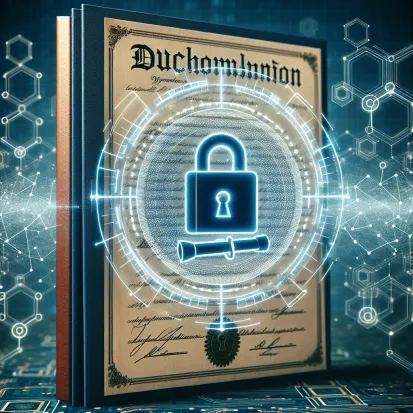Secure Educational Documents with Blockchain: The Future of Academic Credential Protection
Why Secure Educational Documents with Blockchain?
Traditional methods of managing academic documents-such as diplomas, transcripts, and certificates-are vulnerable to forgery, loss, and time-consuming manual verification processes. By leveraging blockchain technology, educational institutions can create tamper-proof, easily verifiable, and globally accessible academic records, addressing the growing demand for secure and efficient credential management in the digital age.
How Blockchain Secures Educational Documents
- Decentralization: Blockchain stores data across a distributed network of nodes, eliminating single points of failure and reducing the risk of unauthorized access or data loss.
- Immutability: Once an educational document is recorded on the blockchain, it cannot be modified or deleted. This ensures the authenticity and integrity of academic credentials, making forgery virtually impossible.
- Cryptographic Security: Advanced encryption techniques protect sensitive student information, ensuring that only authorized parties can access or verify credentials.
- Transparency and Trust: Blockchain’s transparent ledger allows stakeholders-students, employers, and institutions-to instantly verify the validity of academic documents without intermediaries.
- Smart Contracts: Automated issuance, revocation, and management of credentials streamline administrative processes and reduce operational costs.
- Permanent and Accessible Records: Students retain lifelong access to their verified credentials, even if the issuing institution ceases to exist or changes its policies.
Key Benefits of Blockchain-Based Academic Credentials
- Fraud Prevention: Tamper-proof records eliminate fake degrees and unauthorized alterations, protecting institutional reputation and student achievements.
- Instant Verification: Employers and other institutions can verify credentials in seconds, reducing administrative delays and costs.
- Paperless Processes: Digital certificates reduce the need for physical documents, streamlining record management and minimizing environmental impact.
- Global Recognition: Standardized blockchain credentials are easily recognized and trusted by organizations worldwide, supporting international mobility for students and professionals.
- Enhanced Privacy: Students maintain control over who accesses their academic records, aligning with data protection regulations like GDPR.
Real-World Applications and Implementations
Several universities and educational institutions globally are piloting blockchain-based systems to issue, store, and verify academic documents. These systems utilize QR codes for quick access, cryptographic signatures for authenticity, and decentralized storage for resilience. For example, a prototype using a hybrid blockchain network demonstrated secure, efficient, and scalable credential management, with verification times measured in seconds.
Blockchain is also being used to manage a variety of academic records, including diplomas, transcripts, certificates of completion, and professional development records. This approach not only secures the documents but also simplifies the process for students and employers, eliminating bureaucratic bottlenecks and reducing the risk of credential fraud.
Challenges and Considerations
- Scalability: As adoption grows, blockchain systems must be robust enough to handle large volumes of records efficiently.
- Interoperability: Ensuring compatibility between different blockchain platforms and traditional systems is essential for widespread adoption.
- Stakeholder Engagement: Successful implementation requires buy-in from students, institutions, employers, and regulatory bodies.
- Data Privacy: While blockchain enhances security, careful design is needed to balance transparency with privacy and comply with data protection laws.
The Future of Securing Educational Documents with Blockchain
The adoption of blockchain for securing educational documents is still in its early stages but is rapidly gaining momentum. As technology matures, it is expected to disrupt traditional student information systems, automate credential management, and empower learners with lifelong, verifiable records of achievement. Blockchain stands poised to become the gold standard for academic document security, verification, and global recognition.

